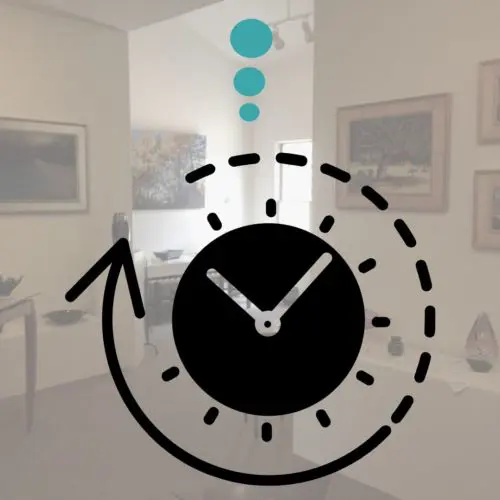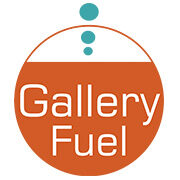 As in any industry, it is easy to get weighed down with the day-to-day running of an art gallery business. Today’s working environment is riddled with distractions: clients, email, social networking, phone calls, and administrative tasks. Entire days can be filled with a series of small but necessary tasks that don’t significantly impact long-term success. Cultivating time management skills for your art gallery’s strategic growth and development for the future is a continuous process.
As in any industry, it is easy to get weighed down with the day-to-day running of an art gallery business. Today’s working environment is riddled with distractions: clients, email, social networking, phone calls, and administrative tasks. Entire days can be filled with a series of small but necessary tasks that don’t significantly impact long-term success. Cultivating time management skills for your art gallery’s strategic growth and development for the future is a continuous process.
As an art gallery professional surrounded by creative thinkers, you may feel you can’t find the time, focus, and creative energy needed for gallery development projects. Very frustrating…
In this article, let’s find ways to cultivate that precious time you need. Here you will learn techniques that can increase your focus and creative thinking and result in more productive days that fuel your business growth and success.
The needle-moving tasks of running the gallery
An art gallery business has many important tasks that require focus and creative thinking:
- Designing compelling and memorable shows
- Developing and strengthening the gallery program
- Generating fresh marketing and sales planning initiatives
- Building gallery services
- Nurturing artist relationships and pursuing career-building initiatives for them
- Tapping into new art collector resources
- Creating great content for your website, newsletters, blog, and catalogs
- Providing strong leadership for gallery staff and your art community
These projects don’t often get the attention they deserve because the work days are so reactionary to other demands. Responding to emails and phone calls, keeping your social media and website updated, cleaning the gallery, and managing relationships are all essential day-to-day tasks that must be done to keep the business running.
To evolve your business for long-term success, one must plan carefully and continuously try new strategies to help you achieve your goals. Accomplishing this takes dedicated time and skill.
To be successful in today’s work environment, you should cultivate three key skill sets to increase focus and creative thinking.
- Ritualized routines
- Techno smarts
- Resetting your creative mind
The first step in tackling these is prioritizing your art gallery’s development projects requiring extra focus and creativity. Then determine which ones will have the most significant impact on your gallery’s future.
Many of your priorities are likely tied to business goals with a deadline. Some tasks will be an immediate priority, and others can be accomplished in phases over weeks or months. Plan time to work on strategic gallery projects on your calendar for daily, weekly, and monthly tasks. With a plan made upfront, you won’t have to doubt how you spend time or what your priorities are at the moment.
Creating routines or systems for managing the art gallery business
With your priorities identified, devote time at the beginning of each work day to work on a development priority. Try to make this habit that becomes automatic and a part of your mindset.
Your mind is the freshest and most creative in the morning. Your gallery business (and you) deserves to have the best and most crucial work come first, above all the busy work and demands of others. Come in early, if necessary, to take advantage of the quiet time needed for this work.
Make this time a ritual part of your day. Try setting up triggers that help you focus on these kinds of tasks. For example, triggers could be clearing your desk of all distractions, listening to music that inspires you or setting the lighting a certain way. What work environment changes do you need to make to help you focus?
Time blocking could be a creative way to control your day. It helps you shift from reacting to your day to thoughtfully designing it. By allocating specific time slots for different tasks, you protect your creative focus and ensure that nothing vital slips through the cracks—whether it’s prepping for an opening night or following up with a client.
Here’s an example of how to build a time-blocked schedule that works for your gallery life:
- Morning (9–11 AM): Curatorial work—review new submissions, plan exhibitions.
- Late Morning (11–12 PM): Communication—respond to emails, follow up with clients, liaise with artists.
- Afternoon (1–3 PM): Gallery maintenance—arrange displays, lighting adjustments, prep for tours.
- Late Afternoon (3–4 PM): Marketing & admin—social media planning, newsletters, invoice tracking.
- End of Day (4–5 PM): Strategy time—reflect, analyze visitor data, brainstorm for future events.
Even this may be trying to cram too much productivity into your day. You may need include buffer time between these blocks for unexpected visitors, deliveries, or artistic inspiration that refuses to be scheduled.
Another approach is the designate certain days to activities. For example, Mondays are all about marketing work, Tuesdays artist relationships, Wednesday and Thursday you focus on exhibition work. Friday you follow up with sales leads and work on Gallery maintenance.
With time blocking, you won’t just manage your time—you’ll elevate it to an art form. Give it a go.
Set the mood for brilliant strategic work
The above schedule can help you keep your sanity and keep gallery humming, but I urge you to no neglect strategic work. This kind of mind power requires real focus. You could carve out special time to focus on strategic work, such as the first week of every month. Yes – you need to be doing it regularly, not just once a year. The consistency of this ritual will act as a trigger as well for your clear and creative thought process.
Dedicate a specific space or corner of your gallery or home where you can work on development projects without interruption. Over time, this designated setting acts as a mental cue for deep work.
Allow yourself 90-minute work sessions for these priority tasks. After that, take a short break. Research shows your brain’s ability to focus starts to fade after about 90 minutes of sustained effort. This simple practice can dramatically increase your creative output and reduce burnout.
What does this look like in practice?
- Monday morning: spend 90 minutes brainstorming creative outreach ideas for your next show.
- Tuesday: draft a new collector welcome sequence for your email marketing.
- Wednesday: review artist sales performance and brainstorm new growth initiatives for your top talent
- And so on ….
The key is to show up consistently. Don’t wait to “feel ready.” If you procrastinate with easy tasks, your best hours slip away—and with them, your most valuable strategic growth contributions.
Use Tech Intentionally (Not Reactively)
Technology can streamline your operations, but it can also disrupt your focus if not used mindfully. Constant notifications from emails, group chats, and social media platforms like Instagram can fragment your day and hinder productivity. To maintain focus, consider turning off notifications or placing your phone in another room during strategic work sessions. Additionally, make it a habit to unplug strategically by silencing technology for short periods throughout the day, allowing yourself the uninterrupted time needed for big-picture thinking.
Apps like these can help:
- Focus Booster or PomoDone – Utilize the Pomodoro technique to maintain focus in short, productive bursts.
- Todoist or Trello – Prioritize and track both strategic and routine tasks effectively.
- Focus@Will – Stream music scientifically designed to enhance concentration.
Email is a whole other beast for time management. Managing your email effectively is a highly underrated time management skill. Begin by setting specific times during the day to check your inbox—ideally two or three dedicated blocks—so you’re not constantly reacting to incoming messages. This approach helps maintain your focus for more intensive work. Use folders or labels to organize messages by priority or topic, and apply filters to automatically sort newsletters, promotions, or low-urgency items. Templates or canned responses can save time on repetitive replies, especially for frequent inquiries. Lastly, unsubscribe ruthlessly from mailing lists you no longer read—your future self will appreciate the cleaner inbox and clearer mind.
Resetting your creative mind for strategic art gallery growth
As we discussed above, developing a systemized work routine in a consistent place can set the tone for great work. However, all creative minds get stuck or blocked. It’s just human.
When this happens, you need to learn how to reset your mind. For many successful professionals, this means completely stepping away from what has you stuck.
When you give your mind a chance to rest, you will have the most original ideas for solving problems. Go for a walk, work on a mindless gallery task for 15 minutes, or call one of your artists to hear about their latest projects.
The goal is to redirect your mind to something unrelated to what has you stuck. When you return to it, you may view the challenge in a new light.
Resetting your mind can also help you achieve your goal in less time. When feeling blocked, it is common to spend too much time trying to work through a challenge; the solution will often come faster if you allow your mind to rest for a short time.
To the Point
Mastering time management is essential for the strategic growth of your art gallery. By prioritizing needle-moving tasks, creating structured routines, leveraging technology intentionally, and resetting your creative mind when needed, you can transform your daily operations into a foundation for long-term success. If you need help figuring out what to prioritize to achieve your goals, give me a call. We can work on it together and create a plan that works for you.
Remember, the key is consistency and personalization—experiment with these techniques to find what works best for you and your gallery. Don’t let the demands of the day-to-day overshadow your vision for the future. With focus, creativity, and a clear plan, you can ensure your gallery thrives and evolves in the ever-changing art world.


Leave a Reply